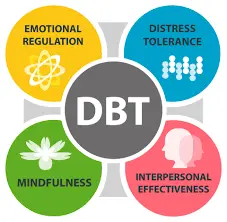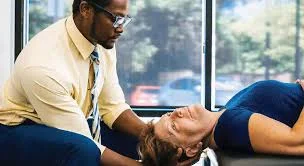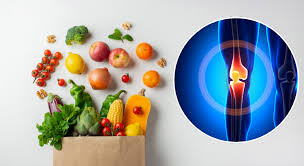Dialectical Behavior Therapy (DBT)
Introduction
Dialectical Behavior Therapy (DBT) is a scientifically proven, evidence-based psychotherapy developed by Dr. Marsha Linehan in the late 1980s. Originally designed to treat individuals with borderline personality disorder (BPD), DBT has since been adapted to address a wide range of mental health conditions, including depression, anxiety, and post-traumatic stress disorder (PTSD).
However, patients with BPD and substance use disorders (SUDs), as well as those who fit the description of binge-eating disorder and older patients suffering from depression, have shown encouraging results.
Regardless of whether DBT imparts equity to other mental conduct approaches, explicit and remarkable components are fundamental for it to be named DBT. Serving the five purposes of therapy, the biosocial theory and emphasizing emotions in treatment, a coherent dialectical philosophy, mindfulness, and acceptance-oriented therapies are a few of these components.
Dialectical Behavior Therapy (DBT) is based on Marsha Linehan’s efforts to develop a treatment for suicidal women with multiple problems. Linehan compiled evidence-based, cognitive-behavioral therapies that target suicidal behavior and analyzed successful psychosocial treatments for various diseases, such as anxiety disorders, depression, and other emotion-related issues. At first, these efforts focused on changing attitudes and behaviors, so many patients reported being criticized, misunderstood, and stigmatized, and they stopped treatment.
Through a combination of scientific research and clinical practice, experiences with suicidal patients with multiple issues led to further research and treatment development. To assist the patient in accepting herself, her feelings, her ideas, the outside world, and other people, Linehan included interventions in the therapy plan.
Because of this, DBT is founded on a dialectical theory, in which therapists constantly work to strike a balance between acceptance and change-oriented techniques.
This effort ultimately resulted in an evidence-based, cognitive-behavioral treatment for borderline personality disorder (BPD). Weekly individual counseling sessions (approximately one hour), group coaching sessions (approximately 1.5 to 2.5 hours), and weekly discussion group sessions (approximately one to two hours) are the core of the DBT treatment package. Currently, eight well-controlled, randomized, clinical trials (RCTs) have shown that DBT is an effective and specific treatment for BPD and related problems.
This piece features different fundamental parts of DBT and is organized around key inquiries that specialists might consider while choosing whether and how to execute the treatment. In doing so, this article primarily emphasizes aspects of the theory and practice of DBT that differentiate this treatment from other approaches, identifies suitable patient populations, and outlines essential and unique elements of DBT required for any given patient.
What is dialectical behavior therapy (DBT) used for?
Individuals who struggle with controlling and regulating their emotions benefit greatly from dialectical behavior therapy (DBT).
DBT treats a variety of mental disorders, such as:
- Borderline personality disorder (BPD).
- Self-injury.
- Behaviors related to suicide.
- Post-traumatic stress disorder (PTSD).
- Addiction issues.
- Feelings of sadness.
- Nervousness.
Interestingly, DBT has worked so well in treating these disorders because it is thought that these conditions are all related to problems stemming from unhealthy or dysfunctional attempts to control strong, unpleasant emotions. Rather than relying on methods that create problems for them, DBT assists individuals in learning healthier strategies to handle these emotions.
Research has demonstrated its effectiveness in helping individuals across different age groups, from adolescents to elderly individuals.
DBT for borderline personality disorder
Marginal behavioral condition changes one’s self-insight and relational cooperation. People may have violent outbursts of rage and hatred, mood swings that come on quickly, and a deep dread of being rejected or abandoned. Consequently, this condition can significantly impact one’s self-image, professional or educational aspirations, and relationships.
Living with borderline personality disorder often involves dealing with impulsive actions such as substance abuse, risky sexual behavior, or excessive spending. Additionally, self-sabotaging behaviors can manifest, such as prematurely leaving a stable job.
The American Mental Affiliation has embraced DBT, which is viewed as an extremely fruitful treatment for marginal behavioral conditions.
It leads to the following outcomes:
- Less frequent and less severe suicidal behavior
- Shorter hospital stays
- Less anger
- finding it simpler to establish and preserve ties with other people
- Other conditions DBT can treat
How Does Dialectical Behavioral Therapy Work?
DBT requires multiple visits to a therapist.
Initial DBT Assessment: An individual is provided with a therapist and specific information. expertise in DBT. They’ll ask you questions about your focus and your circumstances. They will provide more information about the process and what your next steps will involve.
Individual therapy: It is common to have regular sessions with a therapist trained in DBT. These meetings typically span an hour. You will talk about the goals you want to accomplish and any challenges you might be having. Talking about your personal life and mental health may be part of this.
Group training: On top of that, you will take part in a weekly group exercise with other patients receiving DBT. This is not a support group; rather, it resembles a class. The therapist will instruct you on techniques to handle and investigate on your own to improve your emotional well-being and relationships. Group activities, such as role-playing challenging scenarios, may also be included.
Telephone crisis coaching: It is common to require additional support in between sessions. As such, your therapist could suggest quick phone check-ins. These are typically 5-15 minute calls during which you can update your therapist on your progress and address any urgent issues.
DBT workbook: You will receive assignments to practice new skills. For example, an individual is asked to keep a diary to track their emotions, urges, reactions, and behavior. Alternatively, you may receive a DBT workbook containing short exercises to reinforce the concepts you are learning.
DBT handouts: Your therapist may provide you with materials in addition to, or in place of, a DBT workbook. They will also present skill-building techniques in a step-by-step format to aid in retention.
In certain occurrences, drugs might shape part of your treatment. In a comprehensive DBT program, your therapist will also have regular consultations with other therapists to discuss their cases.
How do I find a DBT therapist?
A psychiatrist is a doctor who can prescribe medication and also act as a therapist. Interpersonal effectiveness: It requires knowing how to request what you want and need, as well as establishing boundaries while valuing your own and others’ needs.
Finding the right therapist usually takes a lot of time, and this is also true for finding a therapist who practices DBT therapy. Put in the effort to keep a positive mindset and seek guidance from trustworthy individuals to find a therapist who specializes in dialectical behavior therapy. You can ask your primary healthcare provider or a friend or family member for recommendations. Also, you can search for specialists online through neighborhood and state mental affiliations.
Make sure that any therapist you are considering is a state-certified and licensed mental health professional, and that they specialize in treating your specific area of concern, such as eating disorders, borderline personality disorder, or self-harm.
Most therapists’ websites provide information on the issues and circumstances they deal with. If you have any questions, contact or email the therapist’s office before making a decision.
If you are thinking about working with a DBT therapist, it may be helpful to inquire about certain things.
- What is your training in DBT?
- Do you provide full DBT or a customized version? If not comprehensive DBT, why?
- Are you part of a DBT consultation team?
- What is your policy regarding phone calls and emails during the week?
- How much time will you as a starter request for the entire therapy process?
Procedure Details
How does dialectical behavior therapy (DBT) work?
Therapists practicing dialectical behavior therapy (DBT) strive to achieve harmony between accepting oneself and tackling obstacles, as well as promoting personal growth.
Although the structure of dialectical behavior therapy (DBT) varies widely across therapists, DBT typically consists of four types of sessions:
- DBT pre-assessment.
- One-on-one therapy.
- Group sessions for learning skills.
- Telephone crisis coaching.
- DBT pre-assessment
- Before beginning DBT, your specialist could lead an evaluation to check the reasonableness of DBT for you. They will determine whether DBT is the best course of action for you by posing inquiries and outlining how it operates.
Individual DBT therapy
During individual DBT treatment, you will have week-by-week meetings with your specialist.
The objectives of individual DBT therapy sessions are as follows:
- To reduce suicidal and self-harming actions, take steps to stay safe, if needed.
- To reduce behaviors that obstruct productive therapy.
- To address barriers to your progress, such as mental health conditions or relationship issues, and help you achieve your goals and improve your quality of life.
- to impart new abilities to you in place of detrimental habits.
DBT habitually includes giving phone emergency instructions to assist you with understanding your day-to-day routine all the more. You will bring this diary to your sessions so that you and your therapist can determine what to focus on during each session.
DBT skills training in groups
During these sessions, skills will be taught by your therapist in a group environment. This should not be mistaken for group therapy, where you discuss your issues with others. Instead, consider it as a teaching and learning session in a classroom-like environment.
DBT skills are designed to improve your capabilities in your daily life. Four techniques will be taught to you by the therapist:
- Care involves being ready and focused on the current second, as opposed to becoming involved with the past or future.
- Tolerating stress and hardship: This calls for being able to recognize and control your feelings without reverting to negative actions.
Telephone crisis coaching
It is easier to control your emotions when you know what they are. This means you can call your therapist at specific times for support between sessions.
There are times when you might need to give your therapist a call:
- If you require assistance in a sudden emergency, like experiencing the impulse to harm yourself.
- When you are trying to utilize the DBT skills you learned but need guidance on how to do it.
However, your therapist will establish clear boundaries regarding when you can call them, such as during an agreed-upon timeframe during the day.
Crisis coaching works on an as-needed basis. The calls are typically short and should not be a substitute for the work done in one-on-one or group sessions.
Dialectical Behavioral Therapy Techniques
Please remember the following information:
DBT skills can be incorporated into your everyday life.
- Building distress tolerance involves learning to handle intense emotions without impulsive reactions, self-injury, or substance abuse.
- Learning interpersonal effectiveness will help you become a better relationship manager, convey your needs, and resolve disagreements.
Additionally:
DBT therapy emphasizes both acceptance and change. Acceptance techniques help you understand yourself and your actions without judgment. For instance, DBT treatment could assist you in realizing that you might be using alcohol as a coping mechanism for anxiety.
Change techniques provide tips for replacing negative behaviors with positive ones, such as managing stressful feelings rather than trying to eliminate them.
Dialectical behavior therapy (DBT) utilizes various techniques to help individuals learn new skills and manage their emotions and behaviors effectively. Essential components of DBT include:
- A key component of highlighting the need for validation is embracing someone’s emotions and experiences without passing judgment.
- Provide organizational skills plans in four main areas: emotional control, pain tolerance, fair thought, and interpersonal communication efficiency.
- Chain analysis is a tool used to break down problematic habits and find the underlying thoughts, emotions, triggers, and actions.
- Teaching problem-solving skills by recognizing and addressing problems and weighing potential solutions.
- Implementing contingency management to promote positive behavior and discourage negative behavior through rewards and penalties.
- Employing exposure therapy to help individuals confront and manage anxiety-inducing situations or triggers.
- Assigning homework to apply therapy techniques in practical settings, such as mindfulness exercises or interpersonal effectiveness approaches.
What Are the 4 Stages of DBT?
Initial treatment or stage 1 focuses on addressing the most extreme and harmful behaviors, such as self-harm or thoughts of suicide.
Stage 2: The focus then shifts to addressing issues affecting a person’s quality of life, including interpersonal effectiveness, emotional regulation, and distress tolerance.
Stage 3: Dealing with problems pertaining to interpersonal relationships and self-esteem is the focus of this phase.
Stage 4: In the final stage, treatment aims to help individuals maximize their lives by seeking greater happiness, strengthening relationships, and pursuing life goals.
What Is DBT Used For?
When it became clear that patients with BPD were not responding as well to cognitive behavioral therapy (CBT) alone as was anticipated, Dr. Marsha Linehan and her colleagues created the treatment known as DBT in the late 1980s.
While initially designed for BPD, DBT could also potentially be a beneficial intervention for:
- Attention-deficit/hyperactivity disorder (ADHD)
- Bipolar disorder
- Borderline personality disorder (BPD)
- Generalized anxiety disorder (GAD)
- Severe clinical depression (including major depression that does not respond to treatment and long-lasting depression)
- Non-suicidal self-injury
- Obsessive-compulsive disorder (OCD)
- Post-traumatic stress disorder (PTSD)
- Substance use disorder
- Suicidal behavior
Benefits of DBT
- DBT requires cooperation between the therapist and the patient to address the apparent conflict between change and self-acceptance in order to support the patient through therapy. Implementing affirmation is one step in this process that increases people’s willingness to collaborate and decreases their likelihood of being distressed by the thought of change.
- In therapy, the therapist acknowledges that an individual’s actions “make sense” within the context of their personal experiences without necessarily agreeing that the actions are the best approach to solving a problem.
- To be able to tolerate and accept your feelings, your situation, and yourself, you must learn change and acceptance skills.
- You will also develop skills to change your behaviors and interactions with others positively.
- Behavioral: You will learn to identify issues or harmful patterns of behavior and swap them out for more beneficial and productive ones.
- Cognitive: Your focus will be on changing thoughts and beliefs that are not helpful or effective.
- Collaboration: You will learn to communicate effectively and work together as a team (therapist, group therapist, psychiatrist).
- Skills: You will acquire additional abilities to improve your competencies.
- Support: You will receive motivation to acknowledge your positive qualities and talents and cultivate and utilize them.
Goals
DBT has flexible goals that may be applied to a range of mental health issues, such as eating disorders, anxiety disorders, mood disorders, and more. DBT aims to provide individuals with the skills and strategies needed to live healthier, more satisfying lives.
DBT aims to help individuals decrease self-harming behaviors such as suicidal thoughts and actions.
DBT teaches individuals how to identify and manage powerful emotions without acting hastily or destructively.
DBT enables people to manage social situations and conflicts more skillfully by enhancing their interpersonal and communication skills.
DBT emphasizes practicing mindfulness, which involves acknowledging and being present with thoughts and feelings without judgment.
DBT encourages acknowledging the necessity for growth and development while also embracing one’s current self.
DBT assists individuals in coming up with practical plans for facing and overcoming life’s challenges.
Summary
In simple terms, DBT is a thorough therapy based on cognitive-behavioral methods, designed to assist women dealing with suicidal thoughts. DBT has been well-researched as a therapy for BPD in parasuicidal females. Still, promising findings have also been noted for patients with BPD and SUDs, individuals meeting the criteria for binge-eating disorder, and elderly patients with personality disorders who are depressed.
While DBT shares similarities with other cognitive-behavioral approaches, there are several essential and distinctive elements required for the treatment to qualify as DBT.
A few of these components include
- (a) carrying out the five tasks of therapy;
- (b) utilizing the biosocial theory and placing a strong emphasis on emotions in therapy;
- (c) upholding a constant dialectical philosophy
- (d) utilizing mindfulness and acceptance-oriented interventions.
Linehan’s extensive treatment handbook is a good place to start for anybody interested in learning more about DBT. Furthermore, Behavioral Tech, LLC offers occasional workshops on DBT that can be found at www.behavioraltech.com. As of right now, DBT is not recognized as a specialty or skill.
How much time will DBT take?
- It’s imperative to remember the following details:
- It’s essential to discuss the duration of your treatment with your therapist. DBT therapy typically lasts for six months or more. It may even last a year. In cases of borderline personality disorder diagnosis, the treatment period maybe even longer.
- As regards any talk therapy, DBT is not a magic bullet for improving symptoms quickly. Its effectiveness depends on your commitment to change, willingness to practice learned skills, and comfort with group and individual sessions.
- While some individuals may begin to experience improvements and positive changes within a few months of starting DBT, the timeline for progress varies for each person.
When to Call a Doctor
You have options:
- Visit the nearest hospital emergency room.
- Dial 911.
FAQs
What is dialectical behavior therapy?
Dialectical behavior therapy (DBT) is a form of talk therapy based on cognitive behavioral therapy (CBT) but specifically designed for individuals experiencing intense emotions.
What is the distinction between CBT and DBT?
CBT provides techniques to modify negative thoughts and tries to assist individuals in recognizing when they may be occurring. On the other hand, DBT assists individuals in accepting themselves, feeling secure, and managing their emotions to regulate potentially harmful behaviors.
Which core ideas underpin dialectical behavioral therapy?
Dialectical behavior therapy concentrates on the events that precede and follow a specific behavior. In DBT, dialectical techniques aid individuals in detaching themselves from extreme positions and finding a balance between acceptance and change.
What are the therapy techniques used in DBT?
To help people live satisfying lives, dialectical behavior therapy, or DBT, is an organized type of treatment that focuses on teaching four essential skills: emotional regulation, mindfulness, acceptance and distress tolerance, and interpersonal effectiveness.
Which four categories make up DBT therapy?
A therapist specializing in Dialectical Behavior Therapy explains The Four Modules of DBT.
Mindfulness in Module 1.
Distress Tolerance, Module 2.
Emotion Regulation in Module 3.
Interpersonal Effectiveness, Module 4.
References
- Dialectical Behavior Therapy (DBT). Cleveland Clinic. https://my.clevelandclinic.org/health/treatments/22838-dialectical-behavior-therapy-dbt
- Dialectical Behavior Therapy (DBT): Definition, Techniques, and Benefits. Verywell Mind. https://www.verywellmind.com/dialectical-behavior-therapy-1067402
- Dialectical Behavior Therapy: Current Indications and Unique Elements. PubMed Central (PMC). https://www.ncbi.nlm.nih.gov/pmc/articles/PMC2963469/
- Dialectical Behavioral Therapy (DBT). WebMD. https://www.webmd.com/mental-health/dialectical-behavioral-therapy
- Dialectical Behavior Therapy: DBT Skills, Worksheets, Videos. Dialectical Behavior Therapy. https://dialecticalbehaviortherapy.com/







